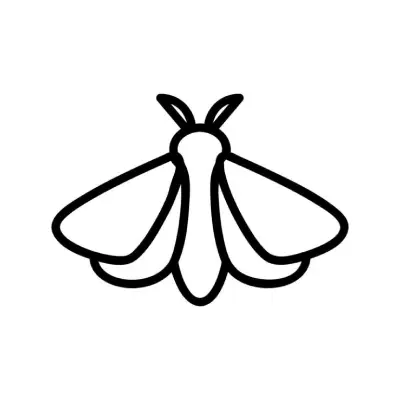Understanding Flies Control and Their Impact
Flies are more than just a nuisance in homes and businesses—they can spread germs and contaminate food. In Canada, people often notice flies in Canada homes, markets, or restaurants, especially during warmer months. Understanding different species of flies is the first step in effective flies control. Flies are winged insects that feed on food waste, decaying material, and sometimes even living tissue. They reproduce quickly, and a few flies can quickly become a major infestation if not addressed.
Common types of flies include house flies, fruit flies, and lesser house flies. Each type of fly has different behaviors, habitats, and risks. For example, types of flies in house kitchens usually include fruit flies, while garbage areas attract larger flies different types. Recognizing different fly species helps homeowners and businesses take appropriate action. For industrial and commercial spaces, uncontrolled flying insects can damage reputation and health safety compliance.
In addition to spreading bacteria, flies can trigger allergies and worsen respiratory issues. Children and pets are especially vulnerable to the health risks associated with small flying bugs. Even little black flies in bedrooms or patios can be irritating. By identifying insects that fly around your property, you can implement targeted flies control strategies that reduce risk and discomfort efficiently.
Types of Flies You Might Encounter
There are countless different kinds of flies, but some are more common indoors and outdoors in Canada. Knowing these different types of flies makes it easier to prevent infestations. House flies are the most familiar types of house flies, typically grey or black, and they often appear near food or garbage. Fruit flies are smaller and attracted to rotting fruits, vegetables, and sugary substances. The brown flying bug is another type often found around compost bins or trash areas.
Beyond these, there are huge flies, tiny flies, and other small fly bugs that can appear in homes unexpectedly. Flies or flys, although sometimes used interchangeably, refer to the plural form of the insect depending on context. Outdoor spaces may also attract different fly species such as lesser house fly and huge flies. Each type behaves differently: some hover, others crawl on surfaces, but all can spread bacteria if uncontrolled.
Proper identification is crucial. Using resources like insect identification Ontario can help homeowners understand names of flying bugs around their properties. Whether it’s small tiny flies in my house or larger winged insects in commercial kitchens, knowing the different types of flies informs better flies control strategies.
Why Flies Appear and Where They Come From
Understanding where do flies come from is essential for controlling them. Flies reproduce in moist, decaying organic matter, trash bins, and areas with poor sanitation. Flying insects can enter homes through open windows, doors, or even gaps in walls. In commercial spaces, improper waste management often attracts different fly species rapidly.
Many people ask, “What is the purpose for flies?” Biologically, flies help decompose organic matter in nature. However, their presence in homes and businesses is unwanted because they can carry pathogens. Knowing where does a fly come from helps in targeting control methods effectively. For example, small fly infestations in kitchens usually come from overripe fruits or spilled liquids, while flies different types in outdoor garbage areas reproduce in organic waste.
Flies can also travel surprisingly far. A single house fly can live for weeks, laying hundreds of eggs during its lifetime. This explains why a small number of flies can suddenly grow into a large infestation. By understanding fly anatomy and life cycles, property owners can implement preventive strategies, such as proper waste disposal and installing screens on windows, to minimize exposure to flying bugs.
Effective Flies Control Methods
Managing flies in Canada homes and businesses requires a combination of preventive and active measures. Flies control begins with cleanliness. Ensure that food is stored in sealed containers, garbage bins are regularly emptied, and surfaces are sanitized. Flying insect traps or sticky tapes can help reduce visible flies indoors. For larger infestations, professional pest control, like services offered by Eco Pest, ensures safe and thorough elimination.
Using natural repellents can also be effective. Certain herbs and essential oils, such as lavender, mint, and eucalyptus, deter different kinds of flies naturally. Installing screens on windows and doors prevents small flying bugs from entering homes. In commercial or industrial spaces, proper waste management, frequent cleaning, and employee training are key to reducing flying insects and ensuring compliance with health regulations.
Preventive measures also include monitoring breeding sites. Regularly inspect compost areas, garbage bins, and drains for types fly activity. Fruit flies vs fleas are often confused, but proper identification ensures targeted treatment. Using a combination of physical barriers, hygiene practices, and professional guidance creates long-term flies control without relying heavily on chemicals.
Common Questions About Flies
People frequently ask questions about flies in homes and businesses. Understanding their behavior helps in managing infestations efficiently.
How many flies are in the world? Scientists estimate millions of different types of flies exist globally. While not all are harmful, the common house fly is responsible for most health risks indoors.
Plural of to fly / fly plural: The correct plural for the insect is flies, while “flys” is a common mistake. Understanding terminology is helpful when researching different fly species online.
Why do small flies appear suddenly? Small flies, such as fruit flies or little black flies, often emerge when fruit, vegetables, or sugary liquids are left exposed. Regular inspection and sanitation are key to prevention.
Where do flies come from? Flies enter homes from outside, attracted by food waste or decaying matter. Addressing breeding grounds prevents future infestations.
By answering these common concerns, homeowners and businesses in Canada can better manage flies Canada, reduce health risks, and maintain comfortable environments.
Choosing the right pest control company in Gatineau, QC makes all the difference. Eco Pest are committed to delivering fast, reliable and safe pest control services. Our team knows the metro area’s unique pest challenges from rodent infestations in older homes to wasp nests in suburban backyards. We take pride in offering solutions that work without compromising your health or the environment.
Our process is simple and stress-free. We start by assessing your property, identifying the pests and creating a tailored pest treatment plan. Whether you are dealing with spiders in your basement or ants in your kitchen, we have got you covered. Plus, our pest control solutions are designed to prevent future infestations, giving you long-lasting results.
Why Choose Professional Flies Control
Sometimes, DIY methods are not enough for effective flies control. Professional services, like Eco Pest, provide targeted solutions for residential, commercial, and industrial properties. Professionals understand different species of flies, their behavior, and the most effective methods to eliminate them.
Professional approaches include monitoring, trapping, and safe chemical treatments tailored for specific flying insects. In addition, experts educate property owners about different types of flies and preventive measures. Choosing a trusted service ensures that infestations are dealt with efficiently and safely, reducing the chance of recurring problems.
In commercial settings, professional intervention is even more critical. Flies in Canada businesses can damage reputation and risk health code violations. By partnering with a




